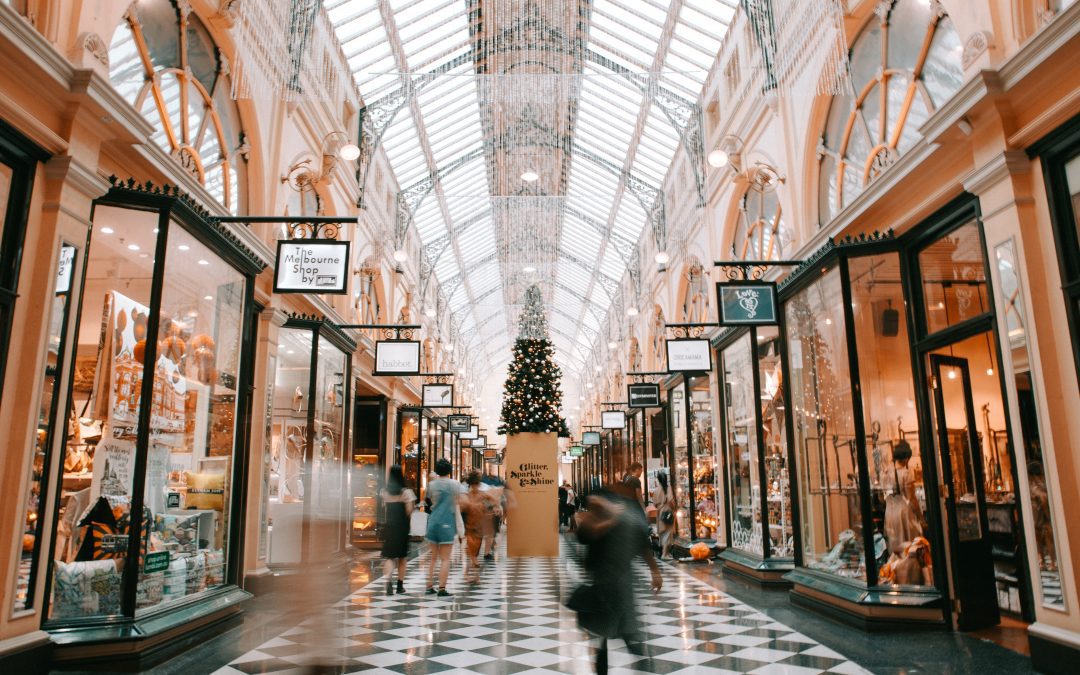In this article we’ve collected 100 top-selling and most popular plastic items. In a world where plastic has become an integral part of our daily lives, this guide aims to delve into the diverse array of plastic products that permeate our existence. From household essentials to cutting-edge innovations, plastics play an indispensable role in countless items we encounter every day. This compilation serves as a detailed exploration into the vast spectrum of plastic applications, shedding light on their functionalities, practical uses, and the sheer magnitude of products crafted from this versatile material.
Within this page, you’ll uncover a wealth of information about the multifaceted nature of plastic. Explore how plastic revolutionized industries, offering durability, flexibility, and affordability. Discover the astonishing diversity of products, ranging from kitchenware to medical devices, showcasing the adaptability of plastics in meeting diverse needs. As we navigate this catalog of the top 100 selling plastic items, you’ll gain insight into the innovative ways in which this material has shaped our modern world, illuminating its ubiquitous presence and pivotal role in our everyday routines.
Contents:
- The Most Popular Plastic Items List
- The Most Commonly Used Types of Plastic
- The Most Interesting Usages of Plastic
- The Biggest Pros and Cons of Plastic
The Most Popular Plastic Items List
1. Bottles: Water, soda, and other beverage containers.
2. Bags: Grocery bags, garbage bags, and various packaging.
3. Packaging: Clamshells, blister packs, and shrink wraps.
4. Containers: Food storage containers, Tupperware, and lunchboxes.
5. Disposable Cups: Disposable and reusable drinking cups.
6. Plastic Cutlery: Forks, spoons, and knives.
7. Straws: Used for drinking beverages.
8. Disposable Plates: Disposable and reusable dinnerware.
9. Film: Used for food wrapping and covering.
10. Wraps: Stretch wraps for packing and sealing items.
11. Toys: Children’s toys made primarily from plastic.
12. Hangers: Used for hanging clothes in closets.
13. Pens: Ballpoint and gel pens.
14. Plastic Keychains: Keyrings and decorative items.
15. Plastic Chairs: Outdoor and indoor seating.
16. Tubs and Bins: Storage containers.
17. Clamshell Packaging: Used for food, electronics, etc.
18. Plastic Tarpaulins: Covers for protection from weather elements.
19. Bottles for Cosmetics: Shampoo, lotion, and skincare containers.
20. Cutting Boards: Kitchen utensils for food preparation.
21. Shower Curtains: Bathroom accessories.
22. Plant Pots: Gardening and nursery containers.
23. Computer Accessories: Mouse, keyboard, etc.
24. Phone Cases: Smartphone covers and cases.
25. Rulers: Measuring tools.
26. Combs and Hair Accessories: Hairbrushes, clips, etc.
27. Office Supplies: Staplers, tape dispensers, etc.
28. Plastic Picnic Ware: Plates, cups, and cutlery for outdoor dining.
29. Plastic Building Materials: PVC pipes, fittings, etc.
30. Toothbrushes: Dental hygiene products.
31. Plastic Racks and Shelving: Storage solutions.
32. Plastic Jars: Used for food storage and packaging.
33. Plastic Kitchen Utensils: Spatulas, ladles, etc.
34. Plastic Clocks: Timekeeping devices.
35. Storage Bags: Ziplock bags and freezer bags.
36. Party Decorations: Banners, balloons, etc.
37. Safety Equipment: Helmets, goggles, etc.
38. Plastic Vases: Decorative items for flowers.
39. Brooms and Brushes: Cleaning tools.
40. Light Switches and Covers: Electrical accessories.
41. Plastic Mats and Rugs: Floor coverings.
42. CD Cases: Storage for CDs and DVDs.
43. Plastic Glasses and Goggles: Also protective eyewear.
44. Buckets: Containers for various purposes.
45. Shower Caddies: Bathroom organizers.
46. Shoe Racks: Organizers for footwear.
47. Dish Drainers: Kitchen accessories.
48. Umbrellas: Also raincoats and rain protection covers.
49. Party Cups: Disposable cups for events.
50. Plastic Book Covers: Protective covers for books.
51. Storage Organizers: Drawer dividers, organizers, etc.
52. Plastic Wastebaskets: Trash bins and recycling containers.
53. Pet Bowls: Food and water bowls for pets.
54. Plastic Food Scoops: Scoops for pet food, flour, etc.
55. Cable Ties: Used for bundling cables and wires.
56. Storage Caddies: Portable organizers for various items.
57. Hula Hoops: Recreational and fitness equipment.
58. Plastic Garden Furniture: Chairs, tables, etc., for outdoor use.
59. Pet Toys: Chew toys, balls, etc., for pets.
60. Bicycle Accessories: Water bottle holders, reflectors, etc.
61. Plastic Drawer Units: Storage solutions for home and office.
62. Plastic Mirrors: Decorative and functional mirrors.
63. Plastic Jewelry: Costume jewelry and accessories.
64. Storage Crates: Stackable crates for storage.
65. Humidifiers/Diffusers: Household appliances.
66. Vacuum Cleaner Parts: Attachments and accessories.
67. Disposable Gloves: Hygienic and protective gloves.
68. Plastic Skateboards: Recreational equipment.
69. Plastic Magnifying Glasses: Optical aids.
70. Plastic Tablecloths: Disposable coverings for tables.
71. Plastic Clothespins: Laundry accessories.
72. Plastic Picture Frames: Display frames for photos and art.
73. Plastic Ice Cube Trays: Kitchen accessories for making ice.
74. Plastic Measuring Cups/Spoons: Kitchen measuring tools.
75. Plastic Steering Wheels: Components in vehicles.
76. Funnel: Kitchen and automotive tool for pouring liquids.
77. Plastic Luggage: Travel bags and suitcases.
78. Plastic Gardening Tools: Trowels, pots, etc., for gardening.
79. Pet Carriers: Carrying cases for pets during travel.
80. Remote Control Cases: Covers for remote controls.
81. Plastic Drawer Knobs/Handles: Furniture accessories.
82. Spray Bottles: Containers for spraying liquids.
83. Plastic Ice Cream Scoops: Utensils for serving ice cream.
84. Coffee Cup Lids: Disposable lids for coffee cups.
85. Sun Visors: Automotive accessories.
86. Baby Bottles: Bottles for feeding infants.
87. Wipes Containers: Containers for storing wet wipes.
88. Plastic Shipping Envelopes: Mailing and packaging envelopes.
89. Plastic Lighters: Disposable lighters for igniting flames.
90. Fishing Gear: Bobbers, lures, etc., for fishing.
91. Plant Tags: Labels for identifying plants in gardens.
92. Disposable Cameras: Single-use cameras.
93. Plastic Fire Extinguisher Cases: Protective cases for extinguishers.
94. Mouth Guards: Sports and dental protection.
95. Drinking Bottle Caps: Covers for bottle openings.
96. Disposable Razors: Single-use shaving razors.
97. Plastic Safety Seals: Tamper-evident seals for products.
98. Stadium Cups: Large disposable cups for events.
99. Plastic Paint Trays: Containers for holding paint during DIY projects.
100. Extension Cords: Electrical accessories for extending reach.
What are the Most Commonly Used Types of Plastic?
Here’s a breakdown of the most commonly used types of plastic. Each of these plastics has distinct characteristics that make them suitable for different applications. Understanding their properties helps in using them effectively and responsibly.
What are The Most Interesting Usages of Plastic?
There are quite a few interesting uses of plastic and many of them can be a great business opportunity:
- Road Construction – Plastic waste is being used to create durable and resilient roads. Mixing shredded plastic with asphalt creates a more flexible and long-lasting road surface.
- Floating Islands – In some regions, discarded plastic bottles are being used to create floating platforms or islands that can host gardens or even small communities. These are often used in areas with limited space or in regions affected by floods.
- Prosthetic Limbs – Certain prosthetic limbs are now being made using lightweight, durable plastics that are more affordable and accessible to amputees in need.
- Fashion and Textiles – Plastic waste, like discarded bottles and fishing nets, is being recycled into fabrics and clothing. Brands are using these materials to create sustainable and eco-friendly fashion lines.
- Spacecraft Parts – Some spacecraft components, particularly those used in satellites and space stations, are made from specialized plastics due to their lightweight and durable properties, enabling space exploration.
- Plastic Roads for Solar Panels – There are experiments where recycled plastic is used to create roads that also serve as platforms for solar panels, combining infrastructure and renewable energy solutions.
- Artificial Corals – In efforts to rebuild and protect coral reefs, some scientists are experimenting with 3D printing plastic structures that mimic the intricate shapes of coral, providing new habitats for marine life.
- Biodegradable Packaging – Innovations in bioplastics have led to the creation of packaging materials that are fully biodegradable and compostable, reducing the environmental impact of traditional plastic packaging.
- Plastic Waste-to-Energy – Some technologies are being developed to convert non-recyclable plastic waste into energy sources like fuel or electricity, providing an alternative to traditional fossil fuels.
What Are the Biggest Pros and Cons of Plastic?
Like a double-edged sword, plastic embodies both convenience and controversy in our modern world. Its unparalleled versatility has revolutionized industries, yet its enduring presence poses significant environmental and health challenges. Delving into the realm of plastic reveals a complex tapestry of benefits and drawbacks, shaping our lives in ways both advantageous and alarming.
Pros
Versatility and Adaptability
One of plastic’s most lauded attributes lies in its incredible versatility. This material can seamlessly adapt to various shapes, sizes, and forms, making it an ideal choice for a vast spectrum of applications. From everyday items to intricate medical devices, its adaptability remains unmatched.
Durability and Resilience
The durability of plastic is a double-edged sword. It stands resilient against many chemicals and harsh environmental conditions, ensuring its long-lasting nature in specific uses. This longevity often contributes to its appeal in industries reliant on robust materials.
Lightweight and Cost-Efficient
The lightweight nature of plastic streamlines packaging and transportation processes, thereby cutting down on shipping costs. Its production, comparatively inexpensive when weighed against alternative materials, allows for cost-effective product manufacturing and accessibility for consumers.
Hygienic Properties
In specialized applications like medical devices and food packaging, plastics provide a critical hygienic barrier. This feature plays a pivotal role in preventing contamination and ensuring safety in these sectors.
Cons
Environmental Impact and Pollution
The shadow cast by plastic’s environmental impact looms large. Its persistent presence in landfills, oceans, and ecosystems poses a grave threat to wildlife, habitats, and human health. The prevalence of single-use plastics significantly contributes to this pervasive pollution.
Non-Biodegradability
Most plastics resist natural decomposition, lingering in the environment for hundreds, if not thousands, of years. This characteristic leads to their accumulation in landfills and marine environments, exacerbating environmental degradation.
Toxic Chemical Leaching
Certain plastics harbor harmful chemicals, such as bisphenol-A (BPA) and phthalates, which can leach into food or the environment, posing potential health risks to living organisms.
Microplastic Pollution
A lesser-known yet critical concern arises from the breakdown of larger plastic items into microscopic particles known as microplastics. These infiltrate water bodies and permeate the food chain, triggering widespread ecological harm and posing threats to various ecosystems.
Read also: 30 Pro Tips to Start a Successful Business
Recommended Articles

TOP 40 Fire-Related Business Ideas to Start in 2024
When we think about fire, it's often about its dangers or the essential role it plays in our daily lives, from cooking to keeping us warm. Yet,...

Is Apple About to Face Tough Times?
Apple, a paragon of innovation and a titan in the tech industry, stands at a critical crossroad. The fiscal year of 2023 unveiled a stark reality:...

Top 30 Business Ideas Near Highway & Guide
If you're considering starting a business near a highway and are on the hunt for the most profitable ventures, you've come to the right place....

TOP 25 Catering Business Ideas for 2024
If you're looking to start a business in the food industry, exploring catering business ideas for 2024 might be the perfect path for you. The catering world offers a wide range of opportunities, from small, intimate gatherings to large-scale events, allowing for...

30 Types of Clothing Stores – Shop Definitions & Examples
In this article, we have compiled a list of the 30 most common types of clothing stores. At first glance, it might seem that a clothing store is simply a place where clothes are sold, suggesting that there wouldn't be many variations among them. However, the reality...
Most Read
100 Top Selling Canned Food Products List
In this comprehensive guide, we've brought together a definitive list of the 100 top-selling canned food products, showcasing a variety of staples that have become essential in pantries around the world. From the comfort of your own home to the great outdoors, canned...

TOP 100 Luxury Services List
In this article we gathered 100 of the most luxurious services available in the world, providing a glimpse into the opulent lifestyles of the ultra-wealthy. Whether you're looking to indulge in a world-class spa treatment or take a private helicopter tour of a remote...
TOP 40 Products to Sell in the UK Online in 2024
Below we have compiled a breakdown of the best products to sell in the UK together with the best product categories to sell to British consumers. The demand for the following products is high and they are particularly popular in the UK. The following summary is based...
TOP 20 Best Things to Sell on The Side of The Road
Are you looking to make some extra cash by selling items on the side of the road? Whether you're a budding entrepreneur or simply seeking a side hustle, finding the right products to sell is crucial. The roadside market offers a unique opportunity to reach a diverse...
